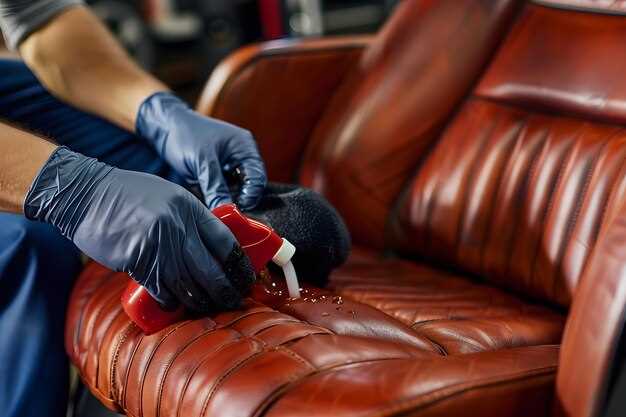
Caring for the leather seats in your vehicle is essential for maintaining the overall integrity and aesthetic of your car’s interior. Leather, while luxurious and durable, can easily become damaged if not properly maintained. Regular cleaning and preservation can extend the life of your leather seats and keep them looking new for years to come.
To effectively clean and preserve leather car seats, it is important to choose the right products specifically designed for leather care. Using the wrong cleaners can lead to discoloration or even cracking of the material. Understanding the unique needs of your leather can help you select the best cleaning methods and products, ensuring that your car interior remains in top condition.
In this article, we will explore various tips and techniques for not only cleaning your leather seats but also preserving their natural beauty and resilience. By implementing these strategies, you can protect your investment and enhance the comfort and appearance of your car’s interior.
Choosing the Right Cleaner for Leather Seats
When it comes to maintaining the luxurious look and feel of your car’s leather interior, selecting the appropriate cleaner for your seats is crucial. Using the wrong product can lead to damage or degradation of the leather, so understanding your options is essential.
Here are key factors to consider when choosing a cleaner for leather seats:
- Type of Leather: Determine whether your seats are made of genuine leather or synthetic leather. Different materials require different types of care. Genuine leather often requires specialized cleaners, while synthetic options may be cleaned with milder products.
- pH-Balance: Look for cleaners that are pH-balanced. This ensures that the cleaner will not strip away the natural oils from the leather, which can lead to cracking and fading over time.
- Conditioning Properties: Some leather cleaners come with conditioning agents. These products not only clean but also replenish the leather’s moisture, keeping it supple and preventing dryness.
- Stain Removal Capability: If you frequently encounter stains, such as those from spills or dirt, choose a cleaner specifically formulated for stain removal. Ensure it is safe for leather to avoid damage.
- Brand Reputation: Opt for well-known brands with positive reviews. Research and select cleaners that are recommended for automotive leather care.
Before using a new cleaner, always perform a patch test on a hidden area of the seat to ensure that it does not cause discoloration or damage. This step is particularly important for older or more delicate leather. Proper care can significantly extend the life of your leather seats, preserving the comfort and aesthetics of your vehicle’s interior.
Step-by-Step Guide to Cleaning Stains
Maintaining the appearance of your car’s interior, particularly the leather seats, is essential for both aesthetic and resale value. Stains can occur due to spills, dirt, or even daily wear. Follow this step-by-step guide to effectively clean stains from your leather seats.
Step 1: Gather Your Supplies
You will need a soft microfiber cloth, a leather cleaner specifically designed for leather, a bucket of lukewarm water, and a soft-bristled brush for tougher stains. Avoid using harsh chemicals or household cleaners that can damage the leather finish.
Step 2: Test the Cleaner
Before applying any cleaner, choose an inconspicuous area of the seat to test for colorfastness. Apply a small amount of the leather cleaner and wipe it gently with a cloth. Wait a few minutes to see if any discoloration occurs.
Step 3: Blot the Stain
If the stain is fresh, immediately blot it with a clean microfiber cloth to absorb as much liquid as possible. Avoid rubbing, as this can push the stain deeper into the leather. For dried stains, gently scrape off any excess residue using a blunt tool, like a plastic spoon.
Step 4: Apply Leather Cleaner
Using your microfiber cloth, apply a small amount of leather cleaner directly to the stained area. Work in circular motions, allowing the cleaner to penetrate the leather without saturating it. For stubborn stains, allow the cleaner to sit for a few minutes.
Step 5: Use a Soft Brush
If the stain persists, lightly scrub with a soft-bristled brush. This will help lift the stain without damaging the leather’s surface. Be careful not to apply too much pressure, as this could cause scratches.
Step 6: Wipe and Rinse
Once the stain is lifted, take a clean microfiber cloth dampened with lukewarm water to wipe away any residual cleaner. Ensure no moisture is left on the leather surface to prevent mildew or damage.
Step 7: Condition the Leather
After cleaning, apply a leather conditioner to restore moisture and flexibility. This will help keep your leather seats looking fresh and prevent future stains. Follow the manufacturer’s instructions for application and drying time.
Regularly cleaning and maintaining your leather seats will protect your vehicle’s interior and enhance its longevity. Remember to address spills and stains promptly for the best results.
Best Practices for Conditioning Leather
Conditioning leather car seats is essential for maintaining their beauty and durability. Regular conditioning helps to prevent cracking, fading, and drying out, ensuring that the interior of your vehicle remains in top condition.
The following best practices will guide you in effectively conditioning your leather seats:
| Step | Action | Notes |
|---|---|---|
| 1 | Clean the Leather | Use a pH-balanced leather cleaner to remove dirt and grime. Avoid harsh chemicals that can damage the leather. |
| 2 | Choose the Right Conditioner | Select a high-quality leather conditioner specifically designed for automotive use. Look for natural ingredients like lanolin or aloe. |
| 3 | Test in a Small Area | Before applying the conditioner to all seats, test it on a small, inconspicuous area to ensure compatibility. |
| 4 | Apply Evenly | Using a soft cloth, apply the conditioner evenly across the surface of the seats in circular motions. |
| 5 | Allow to Absorb | Let the conditioner sit on the leather for the recommended time, usually about 15-30 minutes, to allow it to penetrate. |
| 6 | Wipe Off Excess | After absorption, gently wipe off any excess conditioner with a clean cloth to avoid a sticky residue. |
| 7 | Buff the Surface | Buff the leather seats with a dry microfiber cloth to restore their shine and enhance the protective layer. |
| 8 | Regular Maintenance | Condition the leather seats every 3-6 months to keep them looking their best and to prolong their lifespan. |
By following these best practices, you can ensure that the leather interior of your car remains in excellent condition, enhancing both comfort and value.
How to Protect Leather from Cracking
Leather seats are a luxurious addition to any car interior, but they require proper care to maintain their appearance and durability. Cracking can occur due to various factors, including exposure to heat, dryness, and lack of maintenance. Here are some effective strategies to protect your leather from cracking:
- Regular Cleaning: Keep seats clean by regularly wiping them with a damp cloth. This helps remove dirt and oils that can lead to deterioration.
- Use Quality Leather Conditioner: Apply a good-quality leather conditioner every 3 to 6 months. This replenishes oils and moisture, preventing the leather from drying out.
- Avoid Direct Sunlight: Park your car in shaded areas or use windshield shades to minimize sun exposure. UV rays can cause leather to fade and become brittle.
- Control Humidity: Maintain the right humidity levels in your car. Use dehumidifiers if necessary, especially in colder climates, to prevent excessive dryness.
- Be Cautious of Heat Sources: Keep heat sources, like heated seats or radiators, from constant contact with the leather. High temperatures can accelerate drying and damage.
- Protect from Spills: Immediately clean any spills to prevent staining and moisture absorption. Use coasters or seat covers for drinks.
- Repair Damage Promptly: Address any scratches or scuffs immediately. Use a leather repair kit to restore small imperfections and prevent further damage.
By following these tips, you can extend the lifespan of your leather car seats, keeping them looking beautiful and preventing unsightly cracking damage.
Maintaining Leather Seats in Different Weather Conditions

Leather seats require special care to ensure their longevity, particularly when exposed to varying weather conditions. In hot climates, high temperatures can cause the leather to dry out, leading to cracks and fading. To prevent this, it is essential to use a high-quality leather conditioner regularly, which will keep the material moisturized and supple.
When it’s cold, leather can become stiff and less flexible. To combat this, maintain a stable interior temperature in your vehicle. Avoid leaving your car in extreme cold for extended periods as this can cause the leather to lose its natural oils. Utilizing seat covers during winter months can provide additional protection against the cold.
In humid conditions, leather is susceptible to mold and mildew. It is crucial to keep the seats dry and free from moisture. Regularly drying spills immediately and using a dehumidifier can help maintain the ideal environment for your leather seats. Additionally, applying a protective coating can shield the leather from excess humidity.
Regardless of the weather, regular cleaning is vital. Use a damp cloth to wipe down the leather and remove any dirt or oils that accumulate. For deeper cleaning, opt for a pH-balanced leather cleaner that is specifically formulated for automotive use. Incorporating these care practices will help maintain the appearance and durability of leather seats throughout all seasons.
Common Mistakes to Avoid When Caring for Leather

Caring for leather seats in your car requires attention and knowledge to maintain their beauty and durability. However, many car owners inadvertently make mistakes that can lead to damage and premature wear. One common mistake is using harsh cleaning agents. Products designed for other surfaces can strip away natural oils, causing the leather to dry out and crack.
Another error is neglecting regular maintenance. Leather needs periodic conditioning to keep it supple. Failing to apply a suitable leather conditioner can result in a stiff, unappealing interior. Additionally, excessive moisture is harmful. While leather is durable, exposing it to excessive water or high humidity can lead to mold growth and deterioration.
Using the wrong tools is also a frequent oversight. Abrasive scrubbers can scratch the surface, leaving unsightly marks. Always opt for soft, microfiber cloths when cleaning your leather seats. Lastly, ignoring the specific needs of different leather types is a mistake. Different finishes require distinct care approaches–ensure you know how to treat your leather for the best results.




